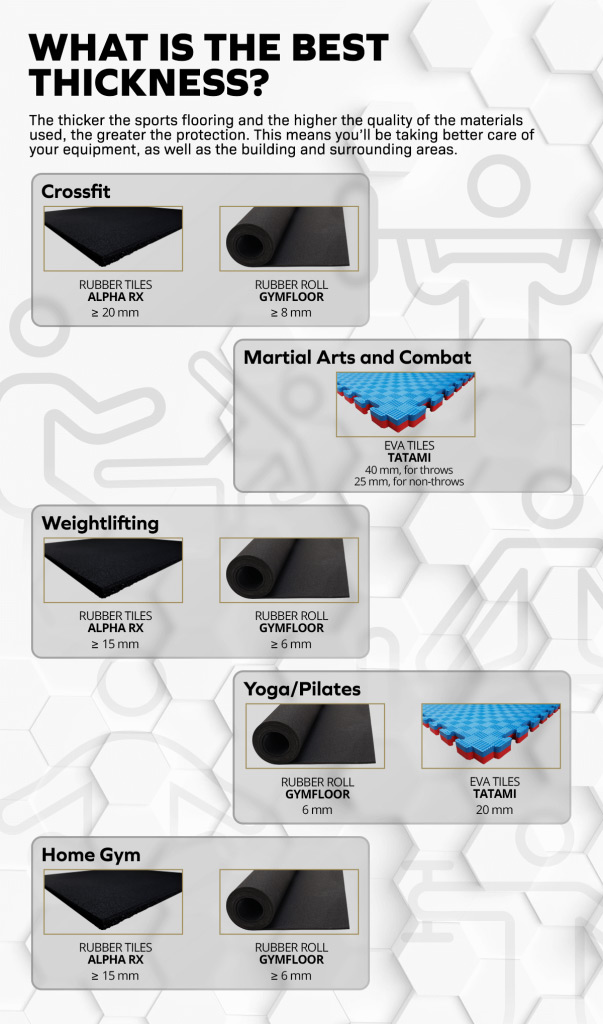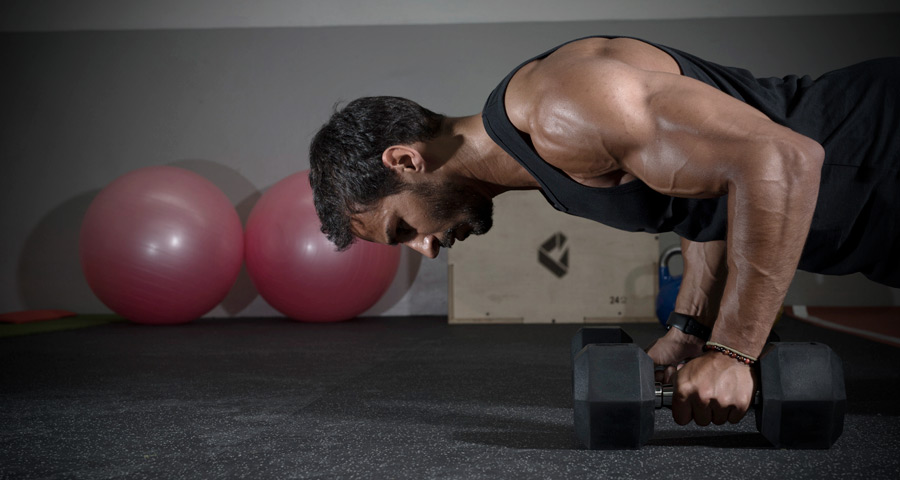Sports flooring must be carefully selected depending on the intended use. Therefore, certain features require careful attention because they affect safety and comfort for users.
Thickness is a key property because it heavily influences the materials’ strength and durability, as well as the type of training the space can be used for.
Why avoid low-thickness flooring?
1. Increased risk of damage and injuries
If not thick enough, there is a higher risk of damage to the floor and equipment. Athletes will also be at greater risk in terms of safety and comfort, as the flooring won’t have enough density to properly absorb the impact of falling and jumping.
2. Less acoustic insulation
A suitable density and thickness of the sports surface helps reduce the impact of vibrations, leading to more effective acoustic insulation. The thicker the flooring, the less noise and vibration affect the fitness space and local area.
This means athletes can drop bars or dumbbells without disturbing the people training around them. Your neighbours will be grateful too, particularly if your gym is in a residential or commercial area.
3. Fewer sporting activities
By selecting thicker flooring solutions, your space becomes multidisciplinary. A single floor enables multiple different activities in your gym. By contrast, low-thickness flooring solutions are not recommended for training with high loads, e.g. at CrossFit boxes.
4. Flooring solutions with lower durability
If flooring thickness is too low, there will be greater wear and less durability. If installed in highly transited areas, it will need to be replaced sooner rather than later.
The importance of choosing a sports surface with suitable thickness
Irrespective of the type of training space, flooring materials must be a priority. This is because whatever fitness items are used, there will always be contact with the floor. If not thick enough, equipment and the building structure may be subject to serious damage.
Workout machines (e.g. treadmills, sleds and racks) tend to be heavy and require appropriate support. Likewise, dumbbells, kettlebells and weightlifting bars can cause strong impacts on the floor, and require a solid base.


